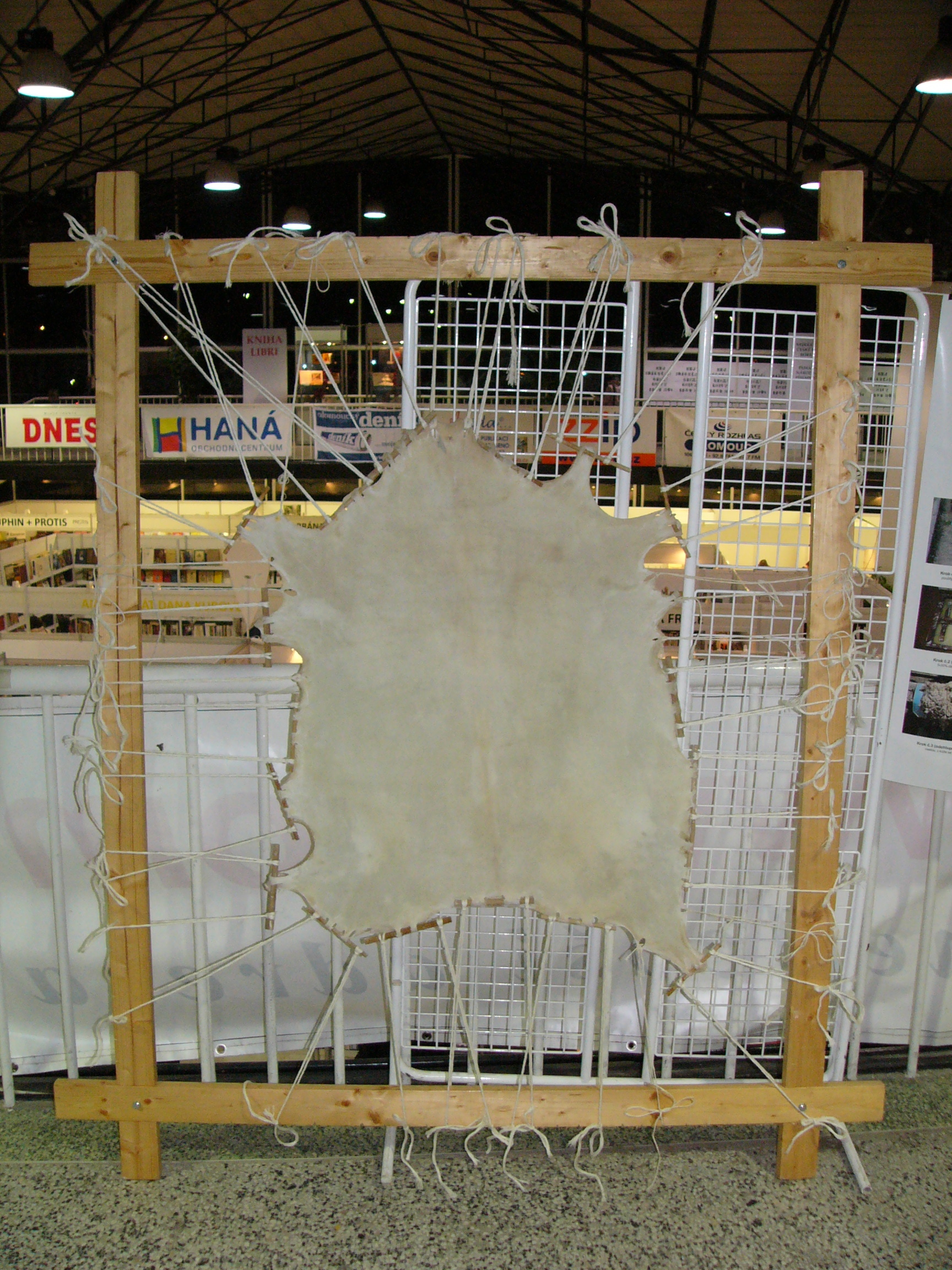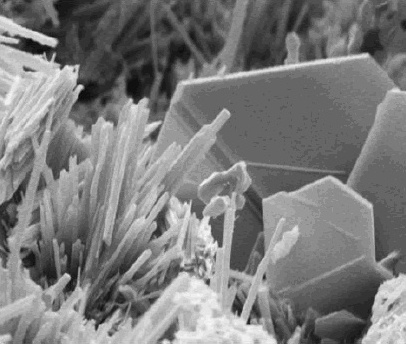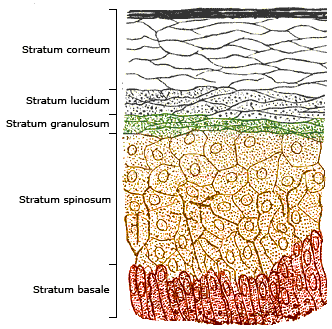|
Liming (leather Processing)
Liming is a process used for parchment or leather processing, in which hides are soaked in an alkali solution. It is performed using a drum and paddle or a pit. Its objectives are: * Removal of interfibrillary proteins. * Removal of keratin proteins. * Collagen swelling due to the alkaline pH. * Collagen fibre bundle splitting. * Removal of natural grease and fatsS.S. Dutta, ''An Introduction to the Principles of Leather Manufacture'', p. 160 Liming operations of cattle hides usually last 18 hours and are generally associated with the alkaline phase of beamhouse operations. Removal of interfibrillary proteins The interfibrillary proteins are denatured by the presence of alkali (particularly sodium sulfide), rendered soluble, facilitating their removal from the leather. Removal is done by the mechanical action of liming or reliming, but more prominently when the pelt is deswelled (during deliming). Failure to remove these proteins results in a hard, tinny leather (due to fibre ... [...More Info...] [...Related Items...] OR: [Wikipedia] [Google] [Baidu] |
Parchment
Parchment is a writing material made from specially prepared Tanning (leather), untanned skins of animals—primarily sheep, calves and goats. It has been used as a writing medium in West Asia and Europe for more than two millennia. By AD 400 most literature in these regions that was intended for preservation began to be transferred from papyrus to parchment. ''Vellum'' is a finer-quality parchment made from the skins of young animals such as lambs and young calves. The generic term ''animal membrane'' is sometimes used by libraries and museums that wish to avoid distinguishing between parchment and vellum. Parchment and vellum Today the term ''parchment'' is often used in non-technical contexts to refer to any animal skin, particularly goat, sheep or cow, that has been scraped or dried under tension. The term originally referred only to the skin of sheep and, occasionally, goats. The equivalent material made from calfskin, which was of finer quality, was known as ''vellum'' ... [...More Info...] [...Related Items...] OR: [Wikipedia] [Google] [Baidu] |
Keratin
Keratin () is one of a family of structural fibrous proteins also known as ''scleroproteins''. It is the key structural material making up Scale (anatomy), scales, hair, Nail (anatomy), nails, feathers, horn (anatomy), horns, claws, Hoof, hooves, and the outer layer of skin in vertebrates. Keratin also protects epithelial cells from damage or stress. Keratin is extremely insoluble in water and organic solvents. Keratin monomers assemble into bundles to form intermediate filaments, which are tough and form strong mineralization (biology), unmineralized epidermal appendages found in reptiles, birds, amphibians, and mammals. Excessive keratinization participate in fortification of certain tissues such as in horns of cattle and rhinos, and armadillos' osteoderm. The only other biology, biological matter known to approximate the toughness of keratinized tissue is chitin. Keratin comes in two types: the primitive, softer forms found in all vertebrates and the harder, derived forms fou ... [...More Info...] [...Related Items...] OR: [Wikipedia] [Google] [Baidu] |
Dyeing
Dyeing is the application of dyes or pigments on textile materials such as fibers, yarns, and fabrics with the goal of achieving color with desired color fastness. Dyeing is normally done in a special solution containing dyes and particular chemical material. Dye molecules are fixed to the fiber by absorption, diffusion, or bonding with temperature and time being key controlling factors. The bond between the dye molecule and fiber may be strong or weak, depending on the dye used. Dyeing and printing are different applications; in printing, color is applied to a localized area with desired patterns. In dyeing, it is applied to the entire textile. The primary source of dye, historically, has been nature, with the dyes being extracted from plants or animals. Since the mid-19th century, however, humans have produced artificial dyes to achieve a broader range of colors and to render the dyes more stable for washing and general use. Different classes of dyes are used for different ... [...More Info...] [...Related Items...] OR: [Wikipedia] [Google] [Baidu] |
Tanning (leather)
Tanning, or hide tanning, is the process of treating Skinning, skins and Hide (skin), hides of animals to produce leather. A tannery is the place where the skins are processed. Historically, vegetable based tanning used tannin, an acidic chemical compound derived from the bark of certain trees, in the production of leather. An alternative method, developed in the 1800s, is chrome tanning, where chromium salts are used instead of natural tannins. History Tanning hide into leather involves a process which permanently alters the protein structure of skin, making it more durable and less susceptible to decomposition and coloring. The place where hides are processed is known as a ''tannery''. The English word for tanning is from the medieval Latin verb , from the noun (oak bark). This term may be derived from a Celtic word related to the Proto-Indo-European *' meaning 'fir tree'. (The same root is the source for Old High German meaning 'fir', related to modern German ''Tannenb ... [...More Info...] [...Related Items...] OR: [Wikipedia] [Google] [Baidu] |
Alkaline Swelling
In chemistry, an alkali (; from the Arabic word , ) is a basic salt of an alkali metal or an alkaline earth metal. An alkali can also be defined as a base that dissolves in water. A solution of a soluble base has a pH greater than 7.0. The adjective alkaline, and less often, alkalescent, is commonly used in English language, English as a synonym for basic, especially for bases soluble in water. This broad use of the term is likely to have come about because alkalis were the first bases known to obey the acid-base reaction theories#Arrhenius theory, Arrhenius definition of a base, and they are still among the most common bases. Etymology The word ''alkali'' is derived from Arabic ''al qalīy'' (or ''alkali''), meaning (see calcination), referring to the original source of alkaline substances. A water-extract of burned plant ashes, called potash and composed mostly of potassium carbonate, was mildly basic. After heating this substance with calcium hydroxide (''slaked lime''), a ... [...More Info...] [...Related Items...] OR: [Wikipedia] [Google] [Baidu] |
Calcium Hydroxide
Calcium hydroxide (traditionally called slaked lime) is an inorganic compound with the chemical formula Ca( OH)2. It is a colorless crystal or white powder and is produced when quicklime ( calcium oxide) is mixed with water. Annually, approximately 125 million tons of calcium hydroxide are produced worldwide. Calcium hydroxide has many names including hydrated lime, caustic lime, builders' lime, slaked lime, cal, and pickling lime. Calcium hydroxide is used in many applications, including food preparation, where it has been identified as E number E526. Limewater, also called milk of lime, is the common name for a saturated solution of calcium hydroxide. Solubility Calcium hydroxide is moderately soluble in water, as seen for many dihydroxides. Its solubility increases from 0.66 g/L at 100 °C to 1.89 g/L at 0 °C. Its solubility product ''K''sp of 5.02 at 25 °C, its dissociation in water is large enough that its solutions are basic according to the following ... [...More Info...] [...Related Items...] OR: [Wikipedia] [Google] [Baidu] |
Sheepskin
Sheepskin is the Hide (skin), hide of a Domestic sheep, sheep, sometimes also called lambskin. Unlike common leather, sheepskin is Tanning (leather), tanned with the Wool, fleece intact, as in a Fur, pelt.Delbridge, Arthur, "The Macquarie Dictionary", 2nd ed., Macquarie Library, North Ryde, 1991 Uses Sheepskin is used to produce sheepskin leather products and soft wool-lined clothing or coverings, including gloves, hats, slippers, footstools, automotive seat covers, baby and knee rugs and pelts. Sheepskin numnahs, saddle pads, saddle seat covers, sheepskin horse boots, tack linings and girth tubes are also made and used in equestrianism. The fleece of sheepskin has excellent insulating properties and it is also resistant to flame and static electricity. Sheepskin is a natural insulator, and draws perspiration away from the wearer and into the fibers. There, it traps between 30 and 36 percent of its own weight in moisture, and it is for this reason that sheepskin is commonly used ... [...More Info...] [...Related Items...] OR: [Wikipedia] [Google] [Baidu] |
Disulfide
In chemistry, a disulfide (or disulphide in British English) is a compound containing a functional group or the anion. The linkage is also called an SS-bond or sometimes a disulfide bridge and usually derived from two thiol groups. In inorganic chemistry, the anion appears in a few rare minerals, but the functional group has tremendous importance in biochemistry. Disulfide bridges formed between thiol groups in two cysteine residues are an important component of the tertiary and quaternary structure of proteins. Compounds of the form are usually called ''persulfides'' instead. Organic disulfides Structure Disulfides have a C–S–S–C dihedral angle approaching 90°. The S–S bond length is 2.03 Å in diphenyl disulfide, similar to that in elemental sulfur. Disulfides are usually symmetric but they can also be unsymmetric. Symmetrical disulfides are compounds of the formula . Most disulfides encountered in organosulfur chemistry are symmetrical disulfides. Unsymme ... [...More Info...] [...Related Items...] OR: [Wikipedia] [Google] [Baidu] |
Hydrolysis
Hydrolysis (; ) is any chemical reaction in which a molecule of water breaks one or more chemical bonds. The term is used broadly for substitution reaction, substitution, elimination reaction, elimination, and solvation reactions in which water is the nucleophile. Biological hydrolysis is the cleavage of Biomolecule, biomolecules where a water molecule is consumed to effect the separation of a larger molecule into component parts. When a carbohydrate is broken into its component sugar molecules by hydrolysis (e.g., sucrose being broken down into glucose and fructose), this is recognized as saccharification. Hydrolysis reactions can be the reverse of a condensation reaction in which two molecules join into a larger one and eject a water molecule. Thus hydrolysis adds water to break down, whereas condensation builds up by removing water. Types Usually hydrolysis is a chemical process in which a molecule of water is added to a substance. Sometimes this addition causes both the su ... [...More Info...] [...Related Items...] OR: [Wikipedia] [Google] [Baidu] |
Epidermis
The epidermis is the outermost of the three layers that comprise the skin, the inner layers being the dermis and Subcutaneous tissue, hypodermis. The epidermal layer provides a barrier to infection from environmental pathogens and regulates the amount of water released from the body into the atmosphere through transepidermal water loss. The epidermis is composed of stratified squamous epithelium, multiple layers of flattened cells that overlie a base layer (stratum basale) composed of Epithelium#Cell types, columnar cells arranged perpendicularly. The layers of cells develop from stem cells in the basal layer. The thickness of the epidermis varies from 31.2μm for the penis to 596.6μm for the Sole (foot), sole of the foot with most being roughly 90μm. Thickness does not vary between the sexes but becomes thinner with age. The human epidermis is an example of epithelium, particularly a stratified squamous epithelium. The word epidermis is derived through Latin , itself and . ... [...More Info...] [...Related Items...] OR: [Wikipedia] [Google] [Baidu] |
Denaturation (biochemistry)
In biochemistry, denaturation is a process in which proteins or nucleic acids lose folded structure present in their native state due to various factors, including application of some external stress or compound, such as a strong acid or base, a concentrated inorganic salt, an organic solvent (e.g., alcohol or chloroform), agitation, radiation, or heat. If proteins in a living cell are denatured, this results in disruption of cell activity and possibly cell death. Protein denaturation is also a consequence of cell death. Denatured proteins can exhibit a wide range of characteristics, from conformational change and loss of solubility or dissociation of cofactors to aggregation due to the exposure of hydrophobic groups. The loss of solubility as a result of denaturation is called ''coagulation''. Denatured proteins, e.g., metalloenzymes, lose their 3D structure or metal cofactor, and therefore, cannot function. Proper protein folding is key to whether a globular or memb ... [...More Info...] [...Related Items...] OR: [Wikipedia] [Google] [Baidu] |








